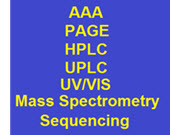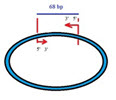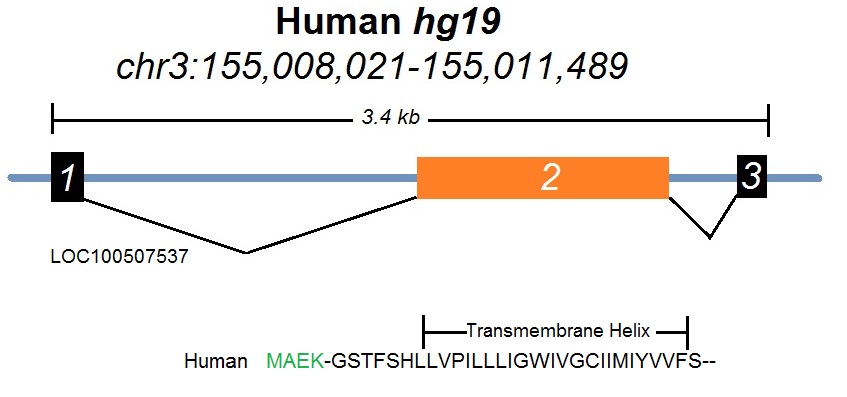|
|
|
Bio-Synthesis Newsletter - June 2016
|
Why Brussels sprouts are good for you!
 Epidemiological and proteomics studies confirmed that eating cruciferous vegetables reduce the incidence of cancer. Hoelzl et al. in 2008 set out to investigate molecular effects and mechanisms of Brussels sprout consumption. The research group performed a dietary intervention study to show that a significant up-regulation of the synthesis of manganese superoxide dismutase (SOD) and a significant down-regulation of the synthesis of heat shock 70 kDa protein (Hsp-70) occurred in people that consumed Brussels sprouts. These two proteins play a pivotal role in malignant transformation of cells and their optimal regulation may be responsible for the anti-carcinogenic effects reported for Brussels sprouts.
Epidemiological and proteomics studies confirmed that eating cruciferous vegetables reduce the incidence of cancer. Hoelzl et al. in 2008 set out to investigate molecular effects and mechanisms of Brussels sprout consumption. The research group performed a dietary intervention study to show that a significant up-regulation of the synthesis of manganese superoxide dismutase (SOD) and a significant down-regulation of the synthesis of heat shock 70 kDa protein (Hsp-70) occurred in people that consumed Brussels sprouts. These two proteins play a pivotal role in malignant transformation of cells and their optimal regulation may be responsible for the anti-carcinogenic effects reported for Brussels sprouts.
Reference: Hoelzl et al., 2008, Proteomics Clin. Appl. 2, 108-117.
|
|
Read More
|
|
|
Proteomics and protein characterization
 In the last decades classical protein biochemistry has evolved into proteomics. Historically, the characterization of unknown proteins began with the extraction and solubilization of selected proteins from tissue samples using a variety of methods. Selection of an extraction method is normally guided by the nature of the protein source. However, the complete biochemical characterization of a protein can be quite complex. Downstream methods, used for purification of the protein, generally include affinity chromatography, amino acid analysis, electrofocusing, gel electrophoresis, ion exchange chromatography, mass spectrometry, protein sequencing, as well as size-exclusion or gel filtration chromatography, and spectrophotometry. Additionally, a variety of other methods and assays for the analysis of proteins and protein based products have also been developed. To establish the N-terminal end of a protein Edman based N-terminal protein sequencing is still the method of choice. However, the development of highly sensitive and highly specific mass spectrometry instruments now allow protein identification at exceedingly lower levels.
In the last decades classical protein biochemistry has evolved into proteomics. Historically, the characterization of unknown proteins began with the extraction and solubilization of selected proteins from tissue samples using a variety of methods. Selection of an extraction method is normally guided by the nature of the protein source. However, the complete biochemical characterization of a protein can be quite complex. Downstream methods, used for purification of the protein, generally include affinity chromatography, amino acid analysis, electrofocusing, gel electrophoresis, ion exchange chromatography, mass spectrometry, protein sequencing, as well as size-exclusion or gel filtration chromatography, and spectrophotometry. Additionally, a variety of other methods and assays for the analysis of proteins and protein based products have also been developed. To establish the N-terminal end of a protein Edman based N-terminal protein sequencing is still the method of choice. However, the development of highly sensitive and highly specific mass spectrometry instruments now allow protein identification at exceedingly lower levels.
|
|
Read More
|
|
|
Do you need circular or cyclized oligonucleotides?
 Eukaryotic cells are known to contain circular DNA. This extrachromosomal circular DNA can vary in size, sequence complexity, and copy number. Circular DNA appears to originate from genetic rearrangements, possibly caused by homologous recombination events. The discovery of circular RNA molecules in mammalian cells was made possible by new RNA sequencing technologies and it now appears that different modes of RNA splicing result in the production of circular RNAs. Synthetic circular oligonucleotides lend themselves as molecular tools useful for amplification experiments. Both, single-stranded DNA and RNA molecules can now be custom synthesized. We offer synthesis of circular or cyclized oligonucleotides services.
Eukaryotic cells are known to contain circular DNA. This extrachromosomal circular DNA can vary in size, sequence complexity, and copy number. Circular DNA appears to originate from genetic rearrangements, possibly caused by homologous recombination events. The discovery of circular RNA molecules in mammalian cells was made possible by new RNA sequencing technologies and it now appears that different modes of RNA splicing result in the production of circular RNAs. Synthetic circular oligonucleotides lend themselves as molecular tools useful for amplification experiments. Both, single-stranded DNA and RNA molecules can now be custom synthesized. We offer synthesis of circular or cyclized oligonucleotides services.
|
|
Read More
|
|
|
Does Grehlin make you fat?
 Grehlin, a peptide hormone primarily secreted by the stomach, may not be the physiological regulator of food intake as it was previously thought. Grehlin and its receptor Ghsr are considered as drug targets to enable the suppression of appetite and treatment of obesity. However, this approach will only work if grehlin really suppresses appetite. Recent findings by a French research group suggest otherwise. The research group, using an animal Ghsr model, found that grehlin actually promotes the expansion of adipose tissue without affecting appetite. In the rat animal model for grehlin the peptide made the animals fatter. Synthetic grehlin peptides can aid researchers in their research tasks. We provide catalog peptides as well as custom peptides for research.
Grehlin, a peptide hormone primarily secreted by the stomach, may not be the physiological regulator of food intake as it was previously thought. Grehlin and its receptor Ghsr are considered as drug targets to enable the suppression of appetite and treatment of obesity. However, this approach will only work if grehlin really suppresses appetite. Recent findings by a French research group suggest otherwise. The research group, using an animal Ghsr model, found that grehlin actually promotes the expansion of adipose tissue without affecting appetite. In the rat animal model for grehlin the peptide made the animals fatter. Synthetic grehlin peptides can aid researchers in their research tasks. We provide catalog peptides as well as custom peptides for research.
|
|
Read More
|
|
|
DWORF is a peptide encoded by a long non-coding RNA transcript
 A recent discovery showed that long noncoding RNAs (lncRNAs) often code for short peptides in flies, mammals and humans. These peptides are produced from small open reading frames (smORFs). However, their function is not well understood. For example a smORF peptide appears to positively regulate the sarco/endoplasmic reticulum calcium adenosine triphosphatase (SERCA) activity in mammals. This peptide, a 34-amino acid smORF peptide, predominantly expressed in the heart muscle of mice and humans is called “dwarf open reading frame” or DWORF. Two other peptides, phospholamban (PLN), a 52-amino acid inhibitory peptide, and sarcolipin (SLN), a 31-amino acid inhibitory peptide, are also translated from distinct smORFs in transcripts predicted from lncRNAs. Deep transcriptome sequencing has revealed the existence of many transcripts that correlate with long non-coding RNAs. The emerging field of smORF peptides suggests a repertoire of versatile protein-binding interfaces encoded in the genome that allow regulation of various protein complexes activities.
A recent discovery showed that long noncoding RNAs (lncRNAs) often code for short peptides in flies, mammals and humans. These peptides are produced from small open reading frames (smORFs). However, their function is not well understood. For example a smORF peptide appears to positively regulate the sarco/endoplasmic reticulum calcium adenosine triphosphatase (SERCA) activity in mammals. This peptide, a 34-amino acid smORF peptide, predominantly expressed in the heart muscle of mice and humans is called “dwarf open reading frame” or DWORF. Two other peptides, phospholamban (PLN), a 52-amino acid inhibitory peptide, and sarcolipin (SLN), a 31-amino acid inhibitory peptide, are also translated from distinct smORFs in transcripts predicted from lncRNAs. Deep transcriptome sequencing has revealed the existence of many transcripts that correlate with long non-coding RNAs. The emerging field of smORF peptides suggests a repertoire of versatile protein-binding interfaces encoded in the genome that allow regulation of various protein complexes activities.
Reference: (1) Nelson et al. 2016, Science 351, 271-5. DOI: 10,1126/science.aad4076. (2) DWORFs.
|
|
Read More
|
|
|
|
|
|
|
Bio-Synthesis, Inc.
800 Mario Court, Lewisville, TX 75057, USA
Toll Free: 800.227.0627 | 1.972.420.8505 (Intl.)
|
|
|
|
|